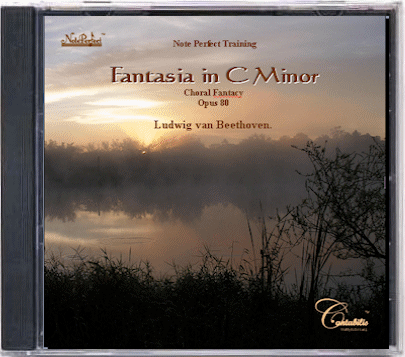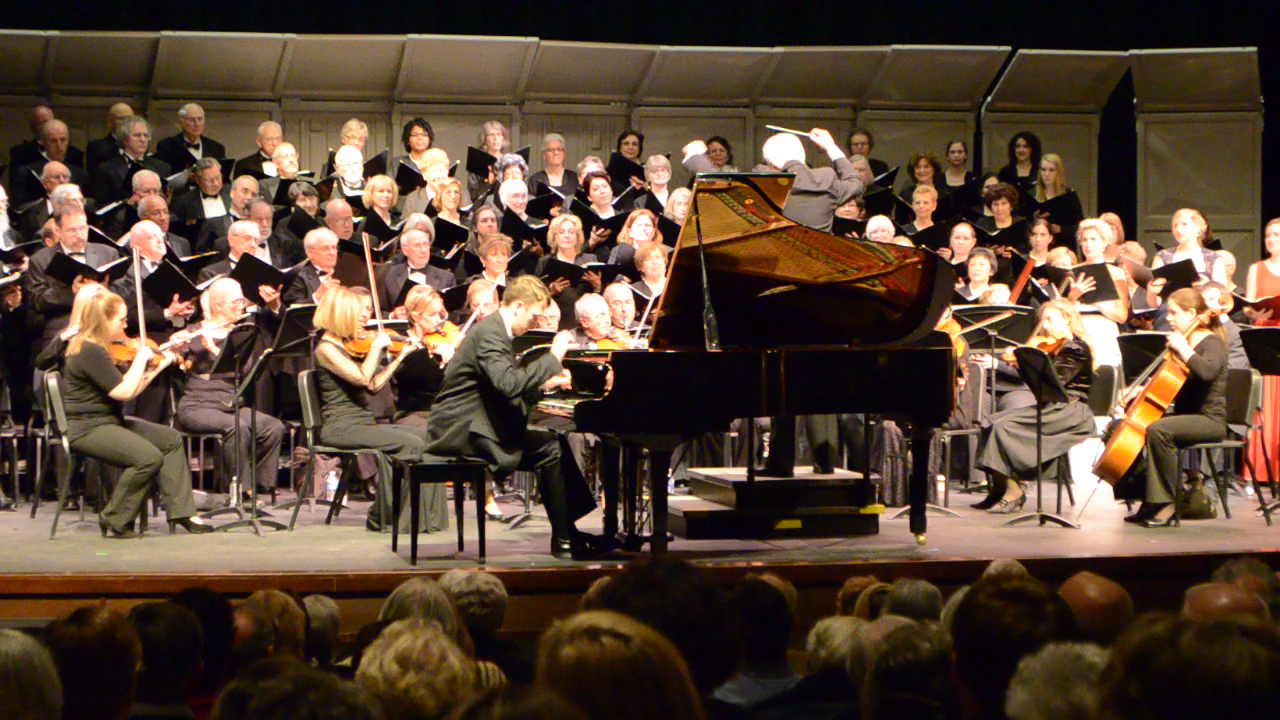Choral Fantasy (Beethoven)
The Fantasy for Piano, Chorus and Orchestra in C minor, Op 80 ( Choral Fantasy short ) is a concert piece by Ludwig van Beethoven and combines features of a piano fantasy, a piano concerto and a cantata. The melody is also reflected in the final of Beethoven's 9th Symphony.
Formation
On December 22, 1808 took place at the Theater an der Wien, an "Academy " ( former name for a concert evening ) with premieres of works by Ludwig van Beethoven with his own line instead. It is one of the most famous concerts and would at the present time whether its length no longer conceivable. It sounded at this " Academy ":
- Symphony No. 5 in C minor op 67
- Symphony No. 6 in F major, Op 68
- Piano Concerto No. 4 in G major, Op 58
- Aria Ah, perfido!
- Three movements from the Mass in C major, Op 86
- Fantasia for Piano, Chorus and Orchestra in C minor, Op 80
To put a glamorous end of the idea following, the Academy, Beethoven wrote the Choral Fantasy down in a very short time. The work contains variations of an unreleased song requited love ( WoO 118) from the year 1794-95, the melody also the finale of the 9th symphony is based. The introduction, however, he completed not on paper, but they improvised during the performance. In the short time the Choral Fantasy had not rehearsed enough and in the performance of Beethoven interrupted the orchestra and put new on. In 1810 published Muzio Clementi, the Choral Fantasy in England under the opus number, Op 65, the publisher Breitkopf & Härtel then published in 1811 as Opus 80 and dedicated it without the consent of Beethoven the King of Bavaria, Maximilian I Joseph.
Text
The text is written according to a later statement by Beethoven's pupil Carl Czerny, the poet Christoph Kuffner. This is confirmed by a recent report on the aufgefundener premiere in the annals of literature and art in the Austrian Kaiserthume ( the February issue 1809). The full text reads:
Sound flattering sweet and lovely our lives harmonies, entschwingen and the sense of beauty Flowers to the bloom forever. Fried, and joy glide friendly as the wave interaction; what pushed his rough and hostile, associates with elation. If the magic sounds reign and the word consecration speaks, must make glorious, Night and storms are light, äuß're rest, inn're bliss, prevail for the lucky But the arts spring sun can entsteh'n of both light. Large, penetrated into the heart, then blossoming new and nice up, has a spirit soared to always reverberates him a chorus of spirits. Take for out their beautiful souls, glad the gifts of fine art. When love and strength marry, worth the human gods favor.
In 1951, the poet and later Minister of Culture of the GDR Johannes R. Becher was commissioned by the Central Council of the GDR youth organization Free German Youth, on the occasion of the same year in Berlin (East) held World Festival of Youth for the Choral Fantasy to write a new text. Beaker wrote about the music a new mood of time after the Second World War Friedensode appropriate (but without specific ideological or political partisanship ), but this was followed by the text of Kuffner in some places literally. The artistic justification for this far-reaching new creation he saw in the traditional view of Beethoven, the 1808 short written text is actually insufficient. Should it come on behalf of the publisher to a textual revision, it would him alone on the prominent position of the word " force " to. Cup text version was primarily in the GDR Performance, also there are few recordings with it. Your poetic quality is partly clearly rated above the text of Kuffners standing.
Plant
The piano introduction includes the final pressure 26 bars and is marked Adagio. The alternative initiation with orchestra includes 26 cycles, followed by the overwritten with the final end of the imagination, it begin the bass with the cellos, Tempo: Allegro. The main section begins in measure 53 ( Meno allegro ) and it is presented to a subject in C major, which has taken Beethoven from one of his early songs ( requited love ). Here are several variations at the same pace, then a C minor variation in wild character, Allegro molto and a slow variation, Adagio ma non troppo, again in C major. In bar 322 is followed by a march in F major on the same subject. After a brief reconciliation begins in measure 398, the actual final part with the use of the vocal soloists, first the women, then the men, before the chorus begins. Re are some variations before the work ends.
Awareness and reception
The work stands in the shadow of similar scale Symphony No. 9, and is therefore fairly unknown, although it is one of the most interesting works of Beethoven. Another reason why it is rarely heard in performances, is the unconventional cast with choir, orchestra, vocal soloists and piano.
The piece " Chorphantasie " the Austrian dramatist Gert Jonke is named after Beethoven's works and plays on the circumstances of its premiere on.










